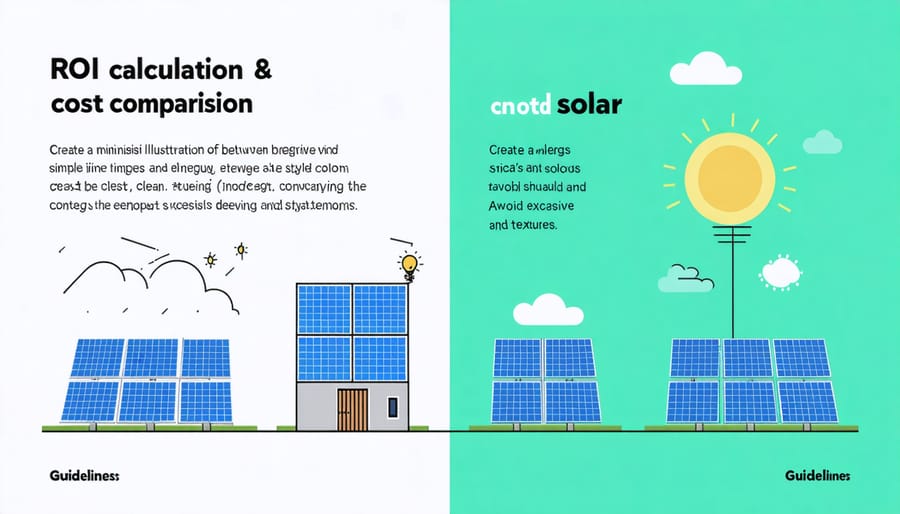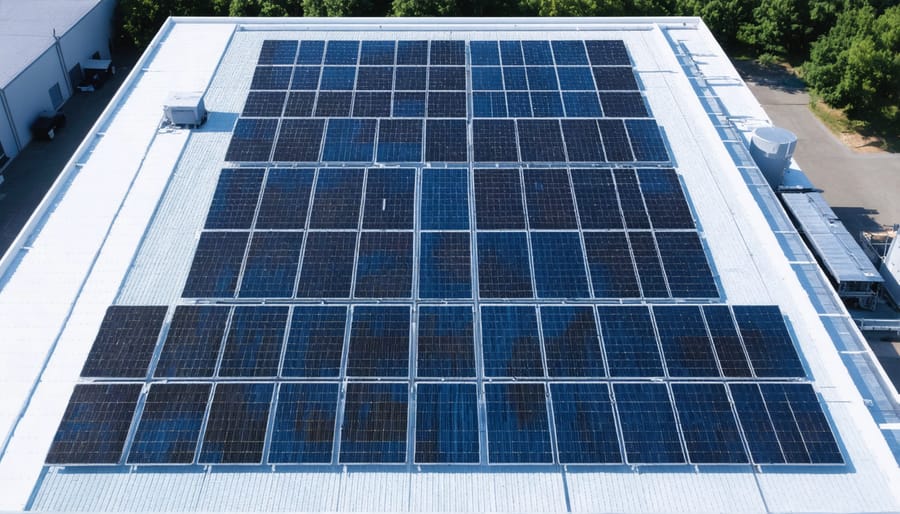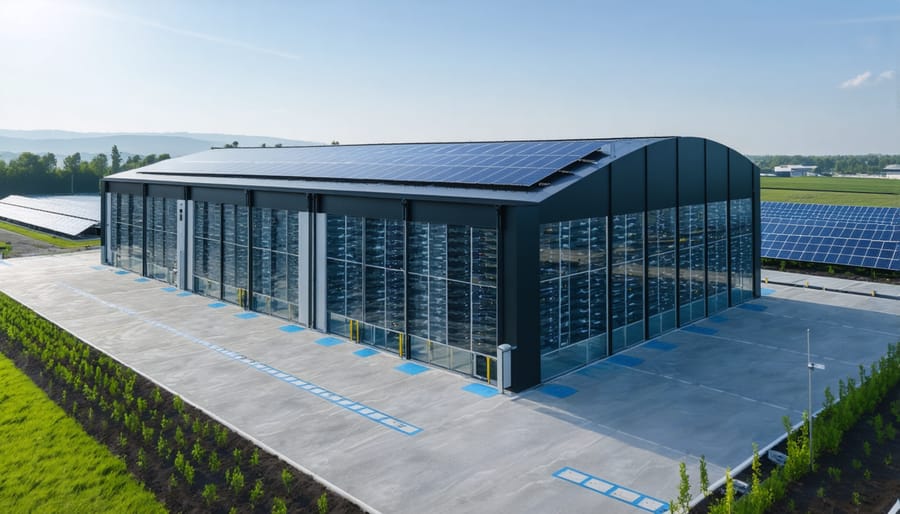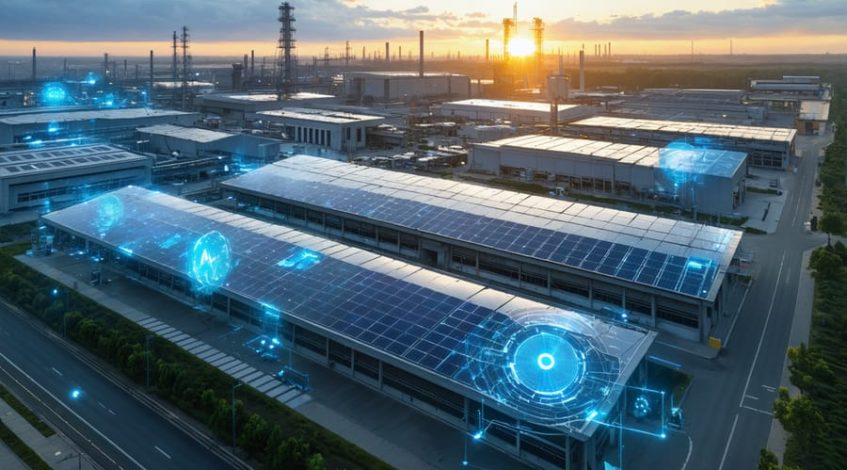Transform your industrial facility’s energy landscape by implementing a strategic three-tier approach to renewable integration. Deploy smart energy monitoring systems to slash energy costs through real-time consumption analysis and automated load management. Install scalable solar infrastructure with modular components that allow for systematic expansion as ROI is proven, typically achieving 15-25% immediate reduction in operational expenses. Optimize energy storage solutions by combining battery systems with peak-demand management protocols, effectively reducing grid dependency by up to 40% during high-cost periods.
Recent data from industrial facilities demonstrates that comprehensive renewable energy strategies deliver average payback periods of 4-6 years, with subsequent decades of reduced operational costs. Leading manufacturers implementing these solutions report enhanced energy security, improved corporate sustainability metrics, and strengthened competitive advantage in markets increasingly focused on environmental responsibility. This systematic approach to renewable energy integration provides a clear pathway for facilities to achieve both immediate cost reductions and long-term strategic advantages in an evolving energy landscape.
Why Solar Energy Makes Business Sense for Industrial Operations
The Rising Cost of Traditional Energy
Industrial energy costs have experienced significant upward trends over the past decade, with traditional energy sources showing increased price volatility and unpredictability. Recent market analyses indicate that industrial electricity rates have risen by an average of 3.5% annually since 2015, placing substantial pressure on operational budgets across manufacturing and processing sectors.
This cost escalation stems from multiple factors, including aging infrastructure maintenance, fuel price fluctuations, and increasing regulatory compliance requirements. Natural gas prices, while historically stable, have shown marked volatility in recent years, with price swings of up to 40% becoming more common. These fluctuations make accurate budget forecasting increasingly challenging for energy-intensive operations.
Transmission and distribution costs have also risen substantially, with some regions experiencing increases of up to 25% in the past five years. For large industrial consumers, these rising costs directly impact profit margins and competitive positioning. Additionally, peak demand charges continue to climb, often accounting for 30-40% of industrial electricity bills.
The compounding effect of these cost increases has prompted many businesses to reevaluate their energy strategies and seek more predictable, cost-effective alternatives for their long-term energy needs.
Financial Benefits and ROI Calculations
Investing in renewable energy solutions delivers substantial financial returns through multiple revenue streams and cost-reduction mechanisms. Initial ROI calculations for solar investments typically show payback periods of 3-7 years, with system lifespans extending beyond 25 years.
Organizations can benefit from federal tax credits covering up to 30% of installation costs, while state-specific incentives may provide additional savings of 10-20%. Performance-based incentives, such as Solar Renewable Energy Credits (SRECs), generate ongoing revenue streams throughout system operation.
Annual energy cost reductions typically range from 40-75% depending on system size and local utility rates. Businesses implementing comprehensive renewable strategies report average utility savings of $50,000-$250,000 annually for medium-sized installations.
Net metering programs allow excess generated power to be sold back to the grid, creating additional revenue opportunities. When combined with energy storage solutions, peak demand charges can be reduced by 20-40%, further enhancing financial returns. Modern monitoring systems enable precise tracking of energy production and consumption, allowing for optimization of ROI through data-driven decisions.

Customized Solar Solutions for High-Energy Industries

Manufacturing Facilities
Manufacturing facilities present unique opportunities for solar energy implementation due to their large roof spaces and high energy consumption patterns. Solar solutions can significantly reduce operational costs while meeting sustainability goals. Recent studies show that manufacturing facilities can offset 20-40% of their energy needs through strategically placed solar installations.
The most effective approach combines rooftop solar arrays with solar carports in parking areas, maximizing available space. Advanced monitoring systems ensure optimal performance and help facility managers track energy production in real-time. Modern solar installations can be integrated with existing building management systems, providing seamless energy coordination.
Energy-intensive processes like heating, cooling, and machinery operation benefit particularly from solar power during peak production hours, which typically align with peak solar generation. Many manufacturers implement battery storage systems alongside solar installations to maintain consistent power supply and manage demand charges effectively.
Case studies demonstrate impressive results. A 500,000-square-foot automotive parts facility in Michigan reduced its annual energy costs by 35% after installing a comprehensive solar system. Similarly, a pharmaceutical manufacturing plant in California achieved ROI within 4.5 years through a combination of solar panels and energy storage solutions.
To ensure maximum efficiency, manufacturers should conduct thorough energy audits before implementation and consider factors such as roof structural capacity, local regulations, and utility incentives. Professional assessment helps determine the optimal system size and configuration for specific facility needs.
Data Centers
Data centers represent one of the most energy-intensive operations in modern business, consuming approximately 1-2% of global electricity. Leading tech companies have pioneered innovative solar strategies to power these facilities sustainably while maintaining reliable operations. Companies like Google and Microsoft have demonstrated that large-scale solar installations can effectively meet the substantial power requirements of data centers.
The implementation of solar power in data centers typically follows a multi-faceted approach. On-site solar arrays provide direct power during peak sunlight hours, while power purchase agreements (PPAs) with utility-scale solar farms ensure consistent energy supply. Advanced energy storage systems complement these solar installations, maintaining uninterrupted power during non-solar hours and ensuring the critical 24/7 uptime that data centers require.
Recent technological advances have improved the efficiency of solar solutions for data centers. Modern photovoltaic systems, combined with smart grid technologies and advanced energy management systems, can achieve power usage effectiveness (PUE) ratings as low as 1.1, significantly reducing operational costs and environmental impact.
Case studies show that data centers implementing solar strategies typically realize ROI within 5-7 years through reduced electricity costs and operational expenses. Facebook’s data center in New Mexico, for instance, operates on 100% renewable energy, with solar providing a significant portion of its power needs, demonstrating both the feasibility and scalability of solar solutions in data center operations.

Cold Storage and Warehousing
Cold storage and warehousing facilities present unique opportunities for renewable energy implementation, particularly through solar power integration. These energy-intensive operations, which require constant temperature control, can significantly reduce operational costs and environmental impact through strategic solar installations. Modern temperature-controlled storage solutions paired with solar technology can achieve energy cost reductions of 30-40%.
Key solar applications include rooftop PV systems that power refrigeration units during peak daylight hours, thermal energy storage systems that maintain temperatures during non-solar periods, and smart energy management systems that optimize power distribution. Many facilities are now implementing hybrid solutions that combine solar panels with energy storage batteries, ensuring consistent operation during cloudy days or nighttime hours.
Recent innovations in solar-powered cooling technologies have made it possible to maintain precise temperature controls while reducing grid dependency. For example, the Melbourne Fresh Food Market implemented a 1.5MW solar system in 2022, resulting in a 35% reduction in annual energy costs while maintaining required storage temperatures between -23°C and 4°C.
The ROI for solar installations in cold storage facilities typically ranges from 3-5 years, with additional benefits including reduced carbon emissions, enhanced energy security, and improved operational reliability. Government incentives and renewable energy certificates can further improve the financial outlook for these investments.
Implementation Strategies and Best Practices
Energy Load Assessment and System Sizing
Determining the optimal size for your renewable energy system begins with a comprehensive energy load assessment that analyzes your facility’s power consumption patterns. This critical first step involves collecting and analyzing 12 months of historical energy usage data to understand seasonal variations and peak demand periods.
Key factors to consider during the assessment include daily and seasonal consumption patterns, peak usage times, and future expansion plans. For industrial facilities, it’s essential to account for equipment startup loads, which can significantly impact system requirements. Advanced monitoring systems can provide detailed insights into energy consumption patterns, helping to identify opportunities for load shifting and optimization.
The sizing calculation should consider several crucial variables:
– Average daily energy consumption
– Available roof or ground space for installation
– Local solar irradiance levels
– Budget constraints
– Energy storage requirements
– Grid connection capabilities
For most commercial installations, we recommend sizing the system to meet 70-80% of total energy needs, as this typically provides the optimal balance between investment and return. This approach accounts for variations in production and consumption while maintaining grid connectivity for backup power.
The final system size should also factor in potential energy efficiency improvements and future facility expansion. Many organizations benefit from a modular approach, allowing for system expansion as needs grow. This strategy helps optimize initial investment while maintaining flexibility for future scaling.
Remember to consult with qualified engineers and solar specialists who can provide detailed performance modeling and ROI calculations based on your specific circumstances and local conditions.
Integration with Existing Infrastructure
Successful integration of renewable energy systems with existing infrastructure requires careful planning and a strategic approach. The key lies in conducting thorough facility assessments to identify optimal connection points, load requirements, and potential system constraints.
For seamless incorporation, facility managers should first evaluate their current electrical infrastructure, including transformer capacity, switchgear specifications, and distribution systems. This assessment helps determine whether upgrades are necessary and identifies the most cost-effective integration points.
Grid interconnection requirements must be carefully considered, with particular attention to local utility regulations and technical specifications. Modern solar installations typically require smart inverters that can communicate with the existing building management systems (BMS) to optimize energy flow and maintain grid stability.
Organizations can implement a phased approach to minimize disruption to operations. Starting with a pilot installation in a non-critical area allows teams to gain experience and refine integration procedures before expanding to more sensitive operations. This approach also helps distribute costs over time while demonstrating proof of concept.
Physical infrastructure considerations include roof structural capacity for solar installations, available land for ground-mounted systems, and proximity to existing electrical rooms. Cable routing pathways and equipment placement should be planned to minimize transmission losses and maintenance accessibility.
Energy storage systems can bridge the gap between existing infrastructure and renewable sources, providing buffer capacity during peak demand and ensuring consistent power quality. Modern battery systems can be seamlessly integrated with both legacy equipment and new renewable installations, offering enhanced grid stability and power management capabilities.
The most successful integrations typically involve close collaboration between facility engineers, renewable energy specialists, and utility providers to ensure all technical requirements are met while maintaining operational efficiency.
Real-World Success Stories
The implementation of renewable energy strategies has yielded remarkable results across various industries, as demonstrated by several notable success stories. In California, Sierra Nevada Brewing Co. transformed its energy profile by installing a 10.6-megawatt solar array combined with hydrogen fuel cells, reducing its carbon footprint by 88% and achieving annual energy savings of $2.5 million.
Tesla’s Gigafactory in Nevada presents another compelling example, operating on 100% renewable energy through a combination of rooftop solar panels and wind turbines. The facility generates 80% of its energy needs on-site, demonstrating the viability of large-scale manufacturing powered by renewable sources.
Walmart has emerged as a leader in commercial solar adoption, with over 500 facilities equipped with solar installations. Their most successful implementation at their distribution center in Buckeye, Arizona, spans 1.6 million square feet and generates 70% of the facility’s electricity needs, resulting in annual savings of approximately $1.3 million.
The Port of Rotterdam’s solar initiative showcases the potential for maritime industrial applications. By installing floating solar panels across unused water surfaces, the port generates 28 megawatts of clean energy while maximizing space efficiency. This innovative approach has reduced operational costs by 35% and serves as a model for other ports worldwide.
In the manufacturing sector, Ford Motor Company’s Dearborn Truck Plant demonstrates the effectiveness of integrated renewable strategies. Their comprehensive solar and wind power system, combined with advanced energy storage, provides 30% of the facility’s energy requirements and has decreased energy costs by $7 million annually.
These success stories share common elements: careful planning, strategic implementation, and significant returns on investment. The average payback period across these projects ranges from 4 to 7 years, with sustained benefits extending well beyond the initial investment phase. These examples prove that renewable energy adoption is not just environmentally responsible but also financially advantageous for industrial operations of various scales.
Renewable energy strategies, particularly solar power implementation, represent a crucial step toward sustainable business operations and economic growth. The compelling combination of reduced operational costs, enhanced energy independence, and significant environmental benefits makes solar adoption an increasingly attractive proposition for organizations of all sizes. By embracing these solutions, businesses can secure long-term energy cost stability while demonstrating environmental leadership in their respective industries. The time to act is now – with favorable government incentives, advancing technology, and decreasing installation costs, organizations have an unprecedented opportunity to transform their energy infrastructure. Taking decisive steps toward solar adoption today will position your organization at the forefront of the clean energy revolution, ensuring both environmental sustainability and competitive advantage for years to come.

